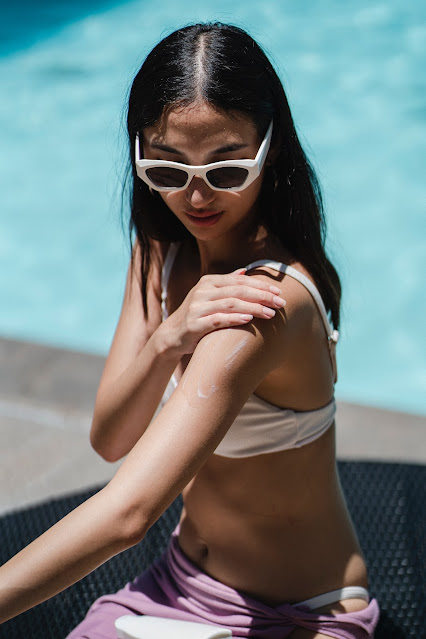SUNSCREENS NOT APPLIED PROPERLY FOR FULL PROTECTION
SUNSCREENS NOT APPLIED PROPERLY FOR FULL PROTECTION
Use higher SPF sunscreen to block cancer-causing rays, scientists say
King's College London researchers have assessed how much sun protection people receive based on typical use. It is well known that people need to receive sunscreen's total ultraviolet radiation blocking benefit because they are applying it more thinly than manufacturers recommend. The findings are published in the journal Acta Dermato-Venereology.
In the first experiment, King's team assessed the DNA damage in the skin after lowering sunscreen application thickness below 2mg/cm2 -- the amount manufacturers use to achieve their SPF rating.
Results showed that sunscreen with a sun protection factor (SPF) of 50, applied in a typical way, would provide 40% of the expected protection. The findings have prompted the King's team to suggest consumers use a much higher SPF sunscreen than they think necessary to protect them from sun damage.
As part of the research, scientists divided a cohort of 16 fair-skinned volunteers into two groups of eight -- (three women and five men). One group received a single UVR exposure to simulate sunlight to areas treated with high SPF sunscreen of varying thickness, ranging from 0.75mg through 1.3mg up to 2mg/cm2.
The other group received exposure on five consecutive days -- to mimic continuous holiday exposure. The amount of UVR exposure was varied during the experiment to replicate the conditions in holiday destinations, such as Tenerife, Florida, and Brazil.
Biopsies of the UVR-exposed areas of skin showed that, for the group that was repeatedly exposed to UVR, considerable DNA damage was found on the sites that received no sun protection, even though the UVR dose was very low.
Damage was reduced when sunscreen was applied at a thickness of 0.75mg/cm2 and considerably reduced when 2mg/cm2 of sunscreen was used, even with much higher UVR doses.
Five days of exposure to high-dose UVR with sunscreen at 2mg/cm2 showed significantly less damage than just one day's low UVR dose exposure without sunscreen across all samples.
Report author Professor Antony Young from King's College London said: 'There is no dispute that sunscreen provides essential protection against the cancer-causing impact of the sun's ultraviolet rays. However, this research shows that how sunscreen is applied plays an important role in determining how effective it is.
'Given that most people don't use sunscreens as tested by manufacturers, it's better for people to use a much higher SPF than they think is necessary.
Nina Goad of the British Association of Dermatologists said: 'This research demonstrates why choosing an SPF of 30 or more is so important. In theory, an SPF of 15 should be sufficient, but we know that we need the additional protection offered by a higher SPF in real-world situations.
'It also shows why we shouldn't rely on sunscreen alone for sun protection, but we should also use clothing and shade. An extra consideration is that when we apply sunscreen, we are prone to missing patches of skin, as well as applying it too thinly.'




Comments
Post a Comment